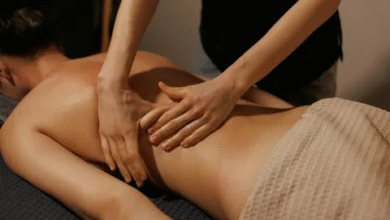Chewing Gum with Invisalign: Everything You Should Know

Invisalign has become one of the most popular orthodontic treatments for people who want straighter teeth without the look and feel of traditional braces. These clear aligners are removable, discreet, and effective, making them a favorite among teens and adults. But with Invisalign, patients often have lifestyle questions that need clear answers. One of the most common questions is: Can you chew gum with Invisalign?
To answer this, dentists often share both the risks and alternatives. If you are considering Invisalign or are already wearing aligners, it is important to understand what chewing gum can do to your trays and your overall treatment timeline. For a more detailed breakdown, check out this complete guide on Can You Chew Gum with Invisalign to keep your treatment on track.
Why Invisalign and Gum Don’t Mix
Invisalign aligners are made of a smooth, clear plastic material designed to gently move teeth over time. While they are durable enough for orthodontic purposes, they are not built to withstand the constant stickiness and chewing pressure of gum. Even one piece can create problems.
Here are the main issues gum can cause:
-
Sticking to Aligners: Gum can cling tightly to the trays, leaving behind sticky residue that is difficult to clean completely. This buildup can stain the trays and make them more noticeable.
-
Warping the Plastic: The repetitive chewing motion may bend or weaken the aligners. Even a small amount of warping can reduce their effectiveness and cause them to no longer fit correctly.
-
Oral Hygiene Risks: Even sugar-free gum is not risk-free. Artificial sweeteners and gum particles can get trapped under the trays, increasing the risk of plaque buildup and bad breath.
Simply put, gum and Invisalign are not a good match.
What Happens If You Accidentally Chew Gum with Invisalign?
Life happens, and sometimes patients forget they are wearing their aligners before chewing gum. If this happens once, don’t panic it is unlikely to cause permanent damage. However, if it becomes a habit, you could compromise your progress.
If you accidentally chew gum with your aligners in:
-
Remove the aligners right away.
-
Rinse them under lukewarm water to remove any gum residue.
-
Brush your teeth before reinserting the trays to avoid trapping sugar or stickiness.
-
Inspect the aligners for cracks, scratches, or warping.
-
If damage is visible, contact your dentist or orthodontist immediately for advice.
A single mistake is usually manageable, but consistency is key to Invisalign success.
Safer Alternatives to Chewing Gum
Many people chew gum for fresh breath, stress relief, or simply out of habit. The good news is that there are Invisalign-friendly options that provide the same benefits without harming your trays.
-
Sugar-Free Mints: These dissolve naturally in the mouth and won’t stick to aligners. They are one of the best substitutes for gum.
-
Mouthwash: A quick rinse with an alcohol-free mouthwash can instantly freshen your breath and kill bacteria.
-
Stay Hydrated: Drinking water not only keeps your mouth moist but also helps wash away food particles and bacteria.
-
Crunchy Fruits & Veggies: Carrots, apples, and celery provide a satisfying crunch that can replace gum while also being good for your teeth.
-
Invisalign Chewies: Special silicone tools designed to help seat aligners properly. They satisfy the need to chew while also improving tray fit.
By using these alternatives, you can avoid gum completely without feeling like you are missing out.
Why Consistency Matters in Invisalign Treatment
Invisalign treatment requires wearing your trays for 20 to 22 hours per day. Any unnecessary removal—whether for gum, snacking, or sipping sugary drinks reduces your wear time. Less wear time means slower results.
Chewing gum with Invisalign also creates the risk of tray damage. If your aligners become warped or cracked, you may need replacements. Replacement trays can delay your treatment timeline and may even result in extra costs. That’s why dentists stress the importance of protecting your aligners and wearing them as directed.
Every small choice you make avoiding gum, cleaning your trays regularly, and staying on schedule with dentist checkups adds up to a smoother and faster treatment experience.
Expert Recommendations
Dentists and orthodontists strongly recommend avoiding gum during Invisalign treatment. Even gums that advertise being “sugar-free” or “dental-friendly” are not designed to be used with aligners. The stickiness alone is enough to cause problems.
Instead, experts suggest planning ahead. Keep mints, water, or a small travel-sized mouthwash in your bag or pocket so you always have a safe option when you feel the urge to chew gum. The more prepared you are, the less tempted you’ll be to risk your aligners.
Orthodontists also emphasize that Invisalign is an investment not only in your smile but also in your time and money. Protecting your trays from damage helps ensure you stay on schedule and achieve the best possible results.
Conclusion
Chewing gum may seem like a harmless daily habit, but when it comes to Invisalign, it can create unnecessary setbacks. Sticky residue, warped trays, and oral hygiene issues make gum more trouble than it’s worth. Thankfully, there are plenty of alternatives such as mints, water, and Invisalign chewies that provide the same benefits without putting your treatment at risk.
With a little discipline and smart daily choices, you can keep your Invisalign journey smooth, comfortable, and on schedule. For more practical insights and professional advice, visit this complete guide on Can You Chew Gum with Invisalign and make sure your path to a straighter smile stays on track.



